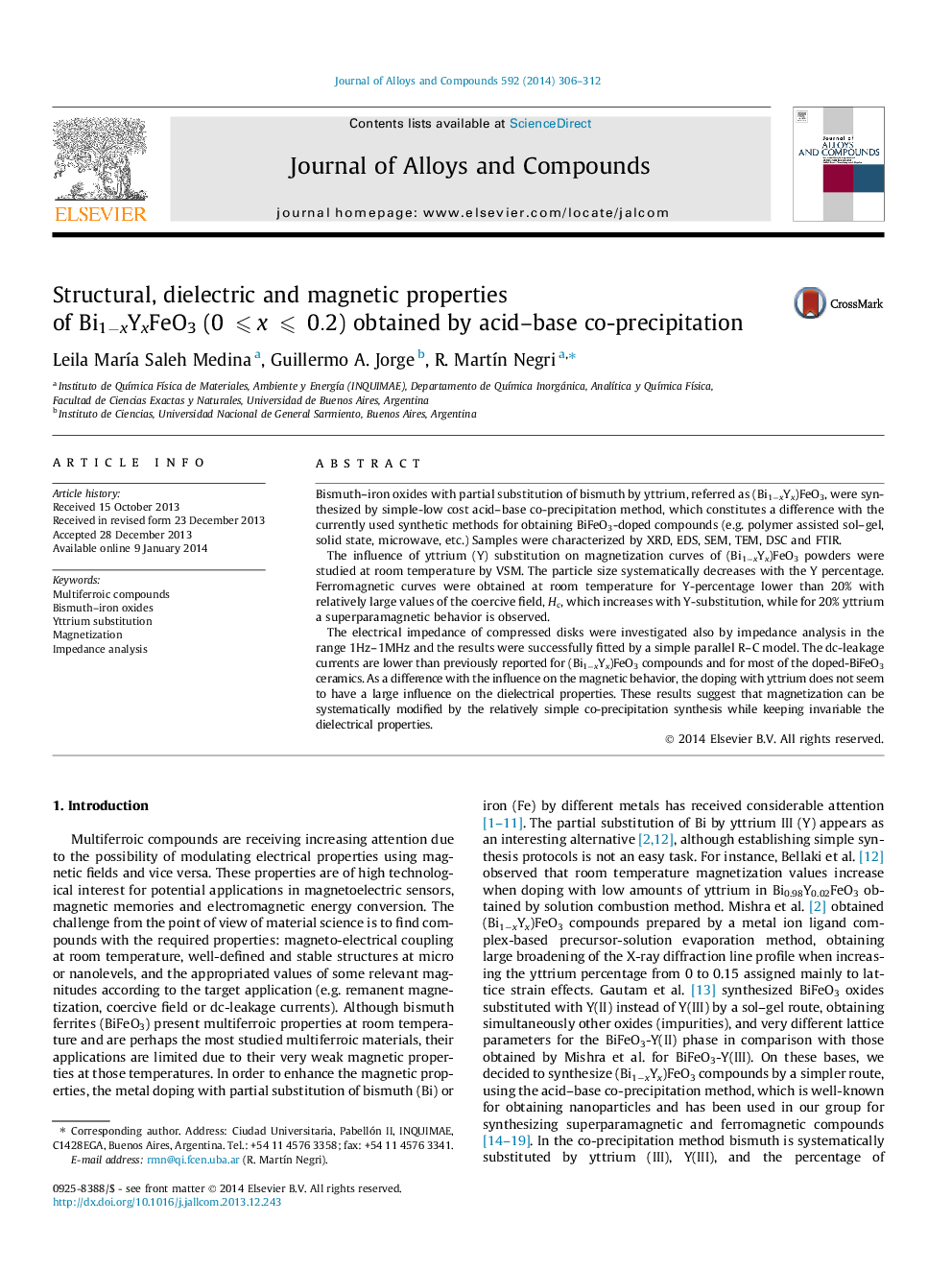| Article ID | Journal | Published Year | Pages | File Type |
|---|---|---|---|---|
| 1611404 | Journal of Alloys and Compounds | 2014 | 7 Pages |
•Yttrium-substituted bismuth-iron oxides were prepared by co-precipitation synthesis.•Single-phase materials with absence of other bismuth-oxides were obtained.•Strong dependence of magnetic and electrical properties with yttrium percentage at RT.•Magnetic and electric properties are related to particle size and structural changes.
Bismuth–iron oxides with partial substitution of bismuth by yttrium, referred as (Bi1−xYx)FeO3, were synthesized by simple-low cost acid–base co-precipitation method, which constitutes a difference with the currently used synthetic methods for obtaining BiFeO3-doped compounds (e.g. polymer assisted sol–gel, solid state, microwave, etc.) Samples were characterized by XRD, EDS, SEM, TEM, DSC and FTIR.The influence of yttrium (Y) substitution on magnetization curves of (Bi1−xYx)FeO3 powders were studied at room temperature by VSM. The particle size systematically decreases with the Y percentage. Ferromagnetic curves were obtained at room temperature for Y-percentage lower than 20% with relatively large values of the coercive field, Hc, which increases with Y-substitution, while for 20% yttrium a superparamagnetic behavior is observed.The electrical impedance of compressed disks were investigated also by impedance analysis in the range 1Hz–1MHz and the results were successfully fitted by a simple parallel R–C model. The dc-leakage currents are lower than previously reported for (Bi1−xYx)FeO3 compounds and for most of the doped-BiFeO3 ceramics. As a difference with the influence on the magnetic behavior, the doping with yttrium does not seem to have a large influence on the dielectrical properties. These results suggest that magnetization can be systematically modified by the relatively simple co-precipitation synthesis while keeping invariable the dielectrical properties.
